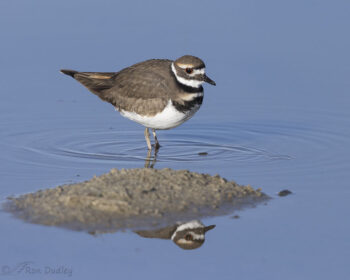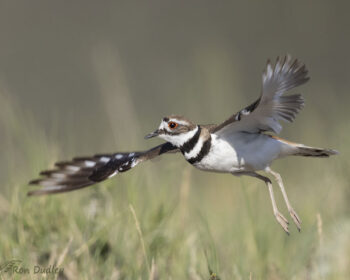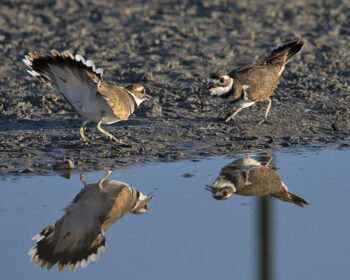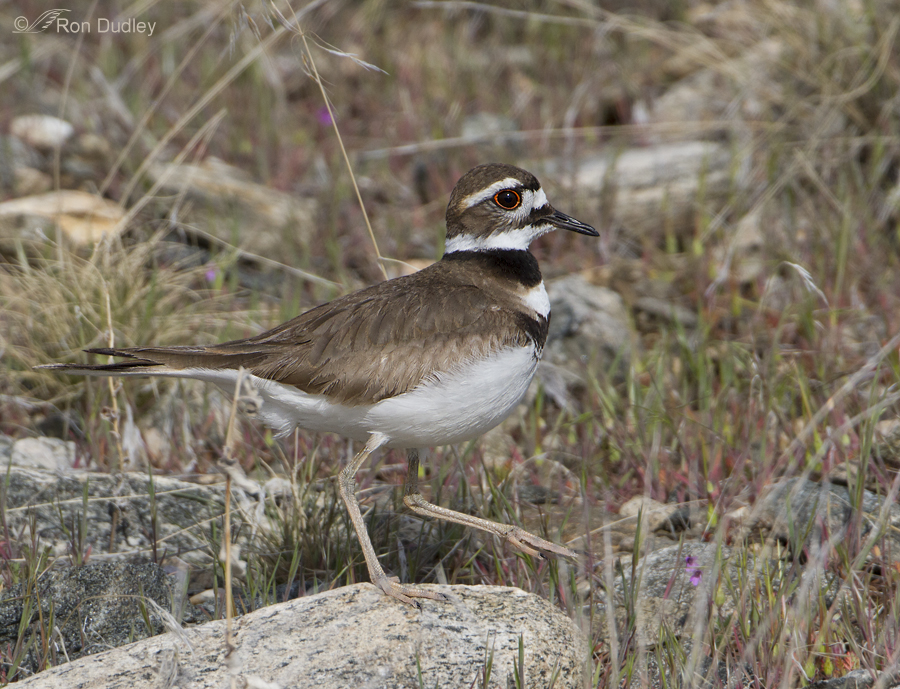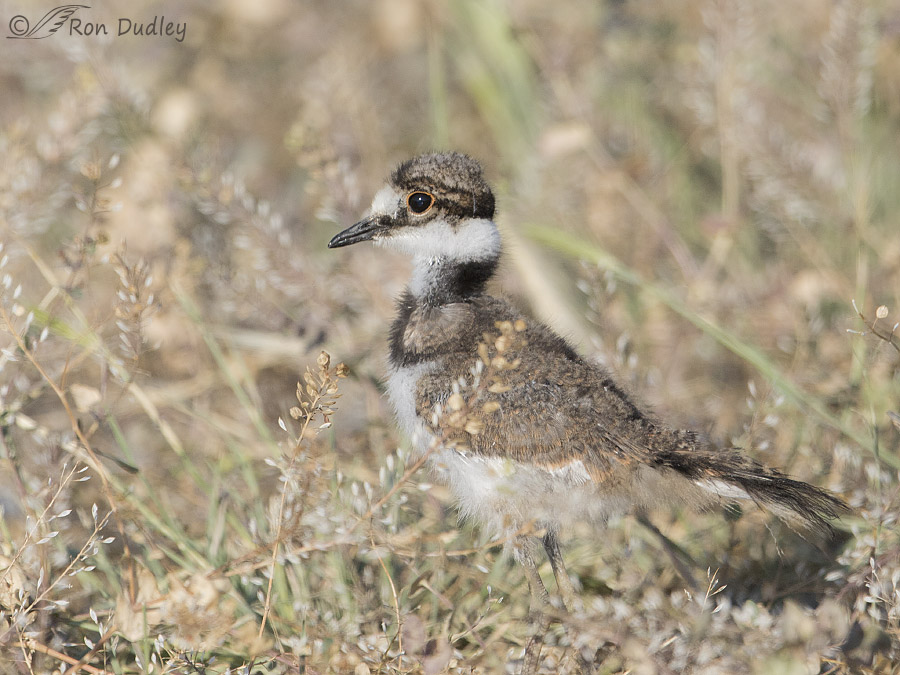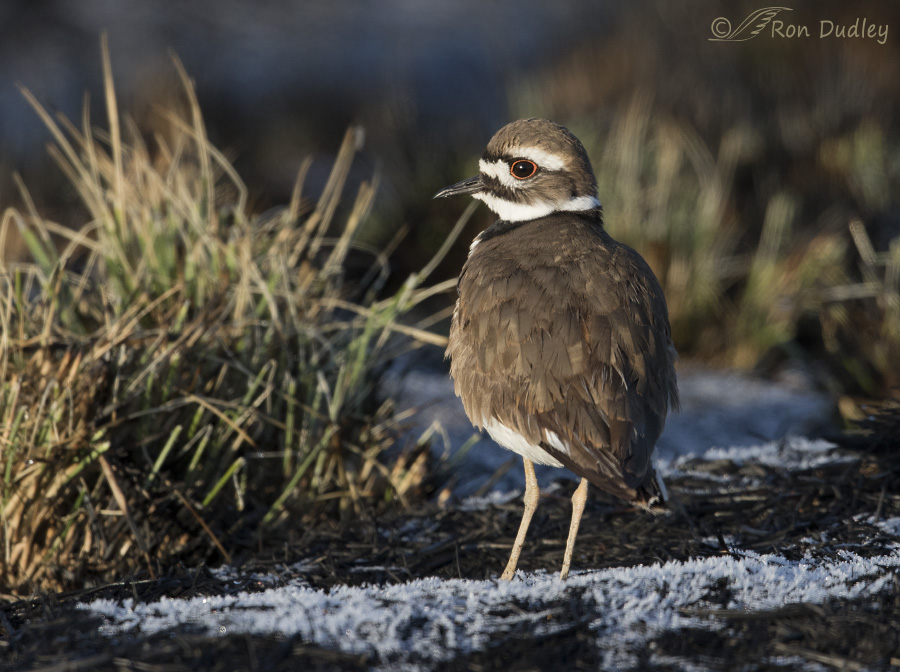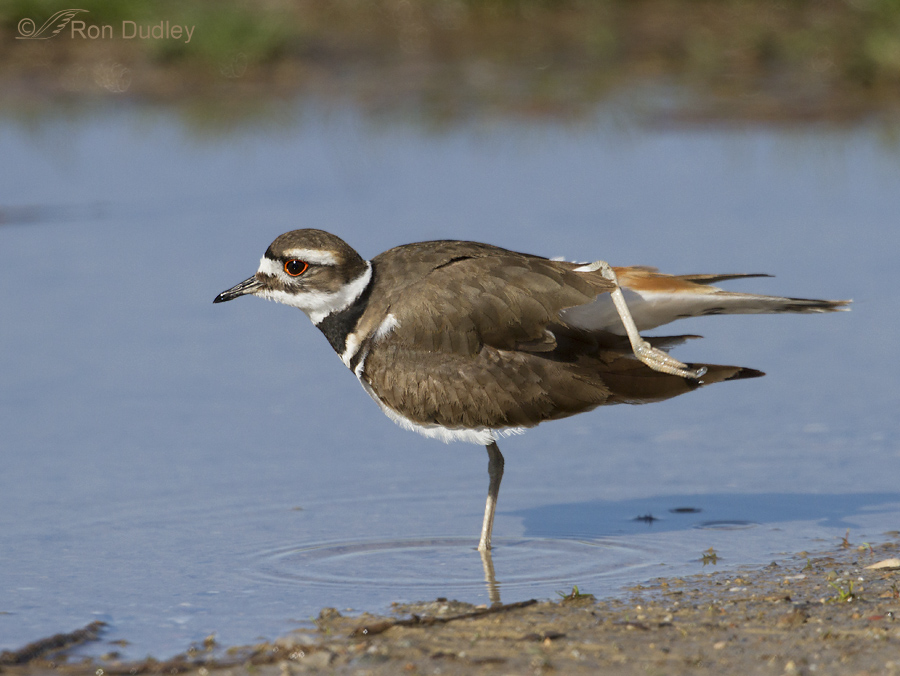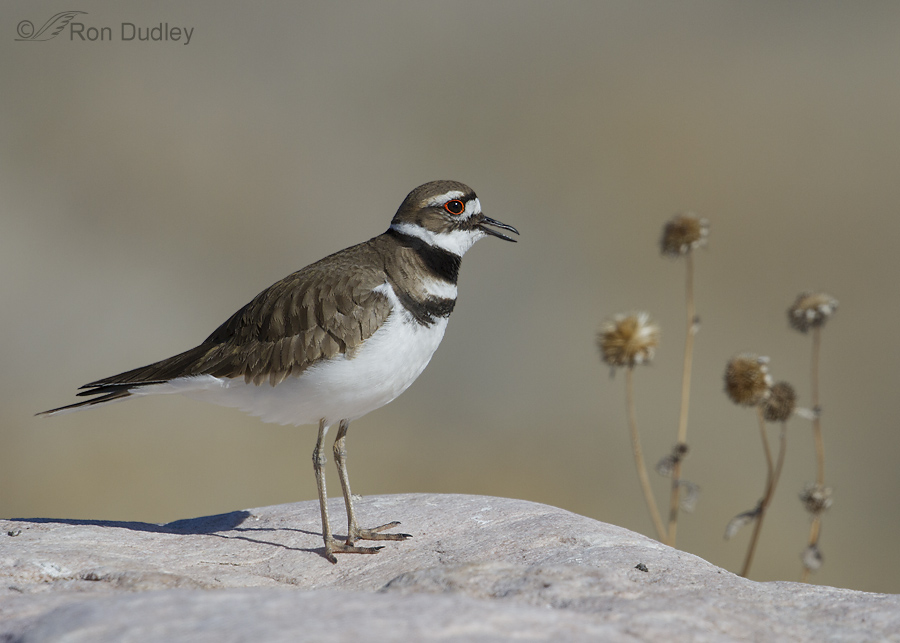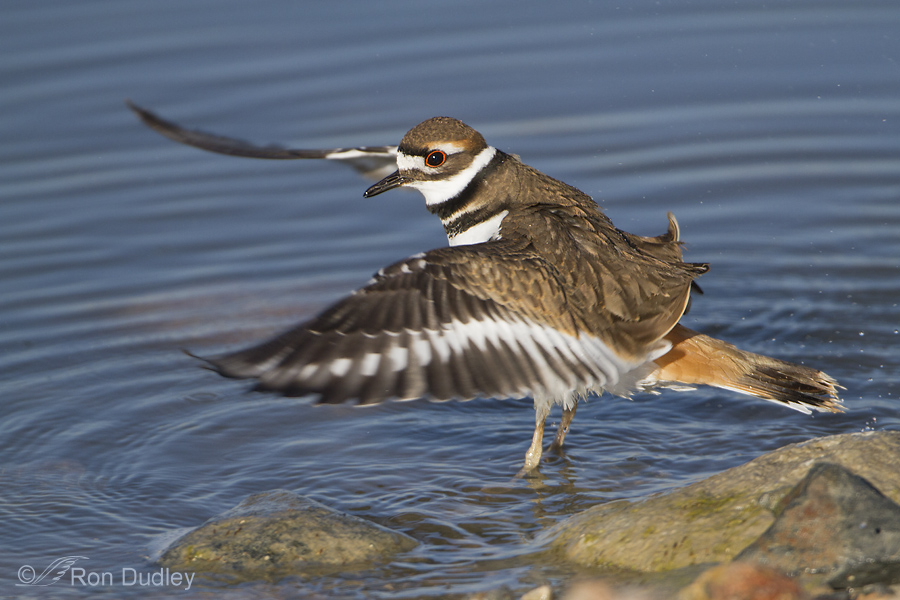Tag: charadrius vociferous
Killdeer In Flight
Killdeer Double (or quadruple) Intimidation Display
Why The Killdeer Doesn’t Perch
Montana Killdeer Chick
Killdeer – Fire And Ice (plus a hawk mystery)
Killdeer – Why Do They Do It That Way?
A Killdeer And The Effects Of Depth Of Field
Killdeer – An Icy Bath And A Wing-flap
Highs And Lows – Killdeer And Bicycles
Yesterday morning didn’t begin well. I was up at 4 AM to give me time to finish my daily blog post so I could leave for Antelope Island by 6 to take advantage of the early morning light on one of those relatively rare recent days where no morning clouds were forecast. After an hours drive to get there I discovered that most of the island was closed to vehicular traffic to accommodate the Collegiate National Cycling Championships (unannounced on the Antelope Island State Park Facebook page). I made one pass of the north loop road and headed for home – an unhappy camper. But we decided to pay Farmington Bay an impromptu visit on the way home and I’m glad we did. We were able to visit with a friend we hadn’t seen in many months who we found walking the refuge road (a regular routine that she enjoys) and I got some Killdeer images that may turn out to be some of my favorites of the species in some ways. This photo is an example. 1/2500, f/7.1, ISO 640, 500 f/4, 1.4 tc, natural light Admittedly, it’s not a very dynamic shot – no interesting behavior and the pose is unremarkable (though perfectly acceptable). But I like the rock it chose to perch on, the light angle was good, it’s a very small crop so the detail is excellent (especially in a larger version) and I simply love the background. So thank you Mr. or Ms Killdeer (and friend Carol) for improving my mood, which was considerably better from Farmington to home than it had been from the island to…
Killdeer Chick With An Extra Dose Of Personality
Well, yesterday may have been the first day of spring but so far I’m not impressed – it’s been dreary and wet and it’s supposed to be very cold through the weekend. I’ll even have to turn the heat on in my de-winterized camping trailer to keep the plumbing from freezing, Ugh… So I’ve been stuck in the house and was going through some older images when I came across this series of a very young Killdeer chick at Farmington Bay WMA. It was in the grasses near a parking lot and it was just as curious about me and my pickup as I was about it. 1/800, f/8, ISO 400, 500 f/4, 1.4 tc, natural light, not set up or called in I’d taken a few shots of this chick just after the sun came up but it was so buried in the grasses that the images weren’t very good but when I came back to the parking lot 51 minutes later it was in an area where the grasses weren’t quite as thick. At first it just watched me and didn’t do much. One of the parents was nearby but neither bird seemed nervous about my presence in my vehicle. 1/500, f/11, ISO 400, 500 f/4, 1.4 tc, natural light, not set up or called in And soon it walked closer to me to check me out. 1/500, f/11, ISO 400, 500 f/4, 1.4 tc, natural light, not set up or called in Then it decided to do some posing for…
Why The Killdeer Doesn’t “Perch”
More than half of all bird species (5000+) are classified in order Passeriformes and referred to as passerines. Passerines, sometimes known as perching birds or less accurately as songbirds, have four toes – three of them directed forward and one toe directed back. This arrangement allows for stable perching on structures such as small branches and herbaceous stems because the hind toe is opposable to the others (much like our thumbs are opposable to our fingers) which allows “grasping”. Interestingly, the tendon/bone anatomy of a passerine causes automatic closing of the foot (grasping) when the leg bends – such as when it lands on a typical perch. This arrangement also allows passerines to sleep on a perch without falling off. Here you can see the typical “three toe forward, one toe back” arrangement on this Savannah Sparrow that allows passerines to grasp narrow perches like branches or wires and remain stable on them. Animals without something like this toe arrangement would be “walking a tightrope” but these birds have no problem with it. Maintaining stability on a perch such as this would be virtually impossible without the ability to grasp, particularly in a breeze (this is a Loggerhead Shrike). This shot of a juvenile White-crowned Sparrow gives us a better look at all four toes. One more look at the opposable rear toe, this time on a Western Meadowlark. Ok, now to my point. Many birds that do not typically “perch” (with exceptions) are waterfowl and shorebirds. The Killdeer is a plover but because of the habitats…
Bathing Killdeer
Two days ago we woke up to a cloudy morning so we put our shooting plans on hold for the day but soon the clouds began to clear from the south so we decided at the last minute to head for Farmington Bay which is not only a shorter drive but it’s further south than Antelope Island, which gave us a better chance for some decent and relatively early light. I’m glad we did – if for no other reason than this cooperative Killdeer. 1/5000, f/5.6, ISO 500, 500 f/4, 1.4 tc The Killdeer was a little wary of us as we approached but as soon as I turned the engine off it settled right down for its morning bath. A note about shutter speed for these shots: When birds are bathin’ and shakin’ the feather movement is very fast and since I had plenty of light and wanted to freeze that movement I made the conscious decision to go for a minimum shutter speed of 1/3200. I think it worked out pretty well to stop the motion of both the feathers and the water spray. All images are in the sequence that they occurred. 1/4000, f/5.6, ISO 500, 500 f/4, 1.4 tc First the Killdeer seemed to be testing the water temperature before proceeding. 1/3200, f/7.1, ISO 500, 500 f/4, 1.4 tc Since the bath water seemed about right the bird began to bathe with gusto. 1/4000, f/7.1, ISO 500, 500 f/4, 1.4 tc For these first few shots the Killdeer…


